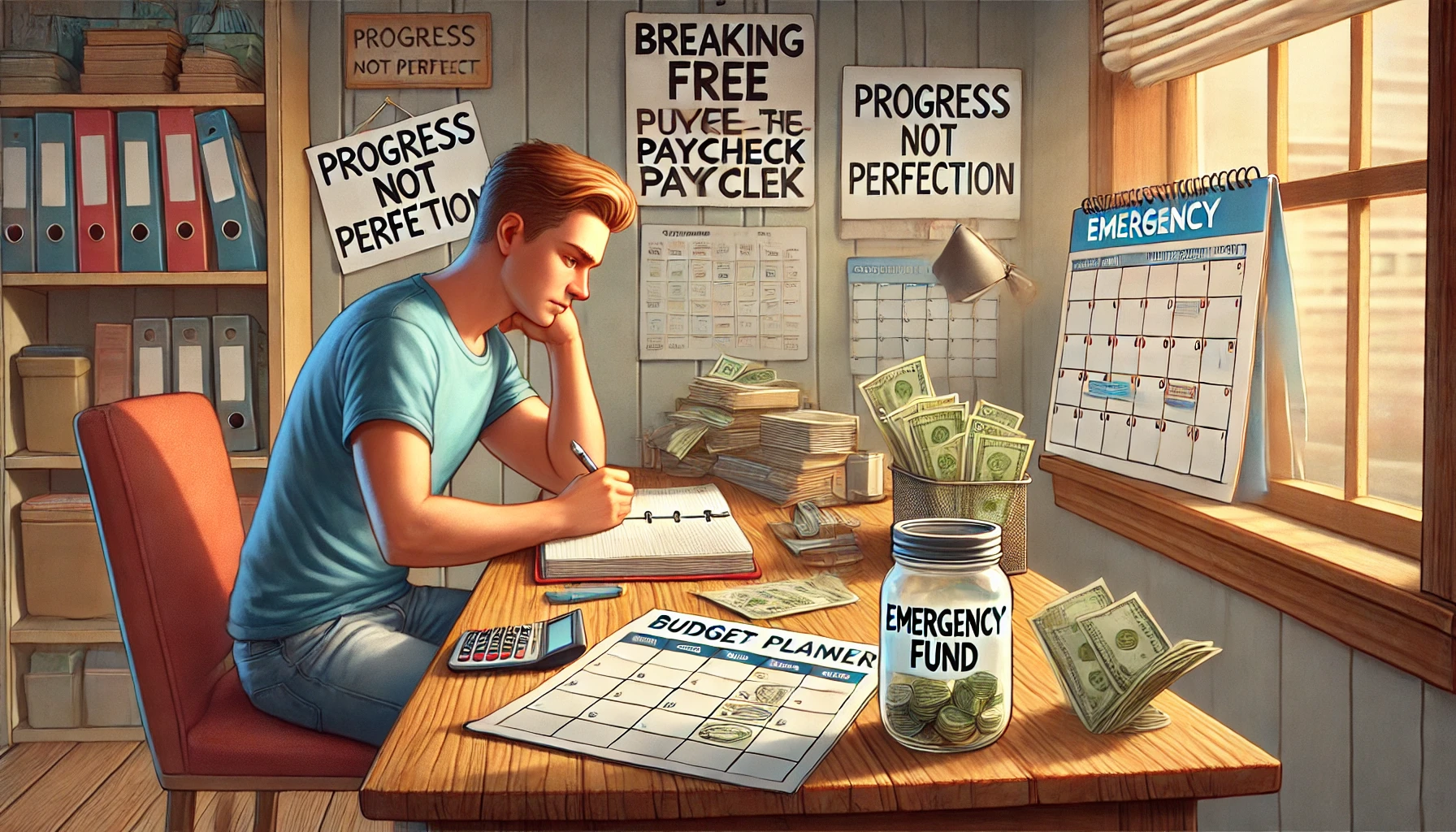Living paycheck to paycheck can feel exhausting. The money comes in—and it’s already gone. Bills, groceries, debt, unexpected expenses… and then you wait for the next payday, hoping nothing goes wrong.
The good news? You don’t need to make a fortune to break free from this cycle. You just need a clear plan and small, consistent steps.
In this article, you’ll learn how to stop living paycheck to paycheck, even if your income is tight.
Step 1: Know Exactly Where Your Money Goes
The first step to freedom is awareness.
What to do:
- Track every dollar you spend for 30 days
- Use an app, spreadsheet, or pen and paper
- Categorize: housing, food, transport, subscriptions, etc.
You can’t fix what you don’t see.
This step will show you where the leaks are.
Step 2: Create a Bare-Bones Budget
A “bare-bones budget” covers only your essentials.
Focus on:
- Rent or mortgage
- Utilities
- Groceries
- Transport
- Debt payments
Cut everything else (for now). You’re building breathing room.
Step 3: Build a Starter Emergency Fund
Even a small emergency fund changes the game.
Goal:
- Save $500 to start
This prevents the next surprise (car repair, medical bill) from wrecking your budget.
Start with just $10/week if that’s what you can manage.
Small steps still count.
Step 4: Prioritize Your Expenses
When money is tight, every dollar must have a purpose.
Strategy:
- Rank your bills: rent first, then electricity, then food, etc.
- Pay the most important ones first
- Delay or reduce low-priority expenses
Don’t let lifestyle creep or pressure pull you off track.
Step 5: Stop Using Credit to Fill Gaps
Credit cards might seem like a lifeline—but they can trap you in a cycle of debt.
Instead:
- Stick to cash or debit
- If you use credit, pay it off immediately
- Look for alternatives: negotiate bills, delay non-essentials
Using credit to survive leads to long-term stress.
Step 6: Find Ways to Increase Your Income
Sometimes, budgeting alone isn’t enough. You may need to grow your income to create real change.
Ideas:
- Take on extra shifts or overtime
- Start a side hustle (freelancing, selling items, tutoring)
- Offer services in your neighborhood (cleaning, delivery, pet care)
Even $100/month can give you margin and motivation.
Step 7: Use the “Pay Yourself First” Rule
Most people save what’s left over. That doesn’t work.
Instead, flip the script.
- Save a small amount right after payday (even $10)
- Automate it to a separate account
- Treat savings like a fixed bill
Consistency builds confidence.
Step 8: Break the Cycle With a One-Month Buffer
Imagine if this month’s income paid next month’s bills. That’s the goal.
How to do it:
- Use part of bonuses, refunds, or side income
- Save until you’re one month ahead
- Then stop living day-to-day
This buffer gives you control and flexibility.
Step 9: Don’t Do It Alone
Support makes change easier.
- Talk to a trusted friend or partner
- Join online finance groups or communities
- Follow content that motivates you (YouTube, podcasts, blogs)
Encouragement keeps you going when things get tough.
Final Thoughts: It’s Not About Perfection—It’s About Progress
You don’t need to be rich to stop living paycheck to paycheck. You need a plan, patience, and a belief that things can get better.
Start where you are. Save what you can. Spend with intention.
Every small win—every extra dollar saved or earned—moves you closer to freedom.
